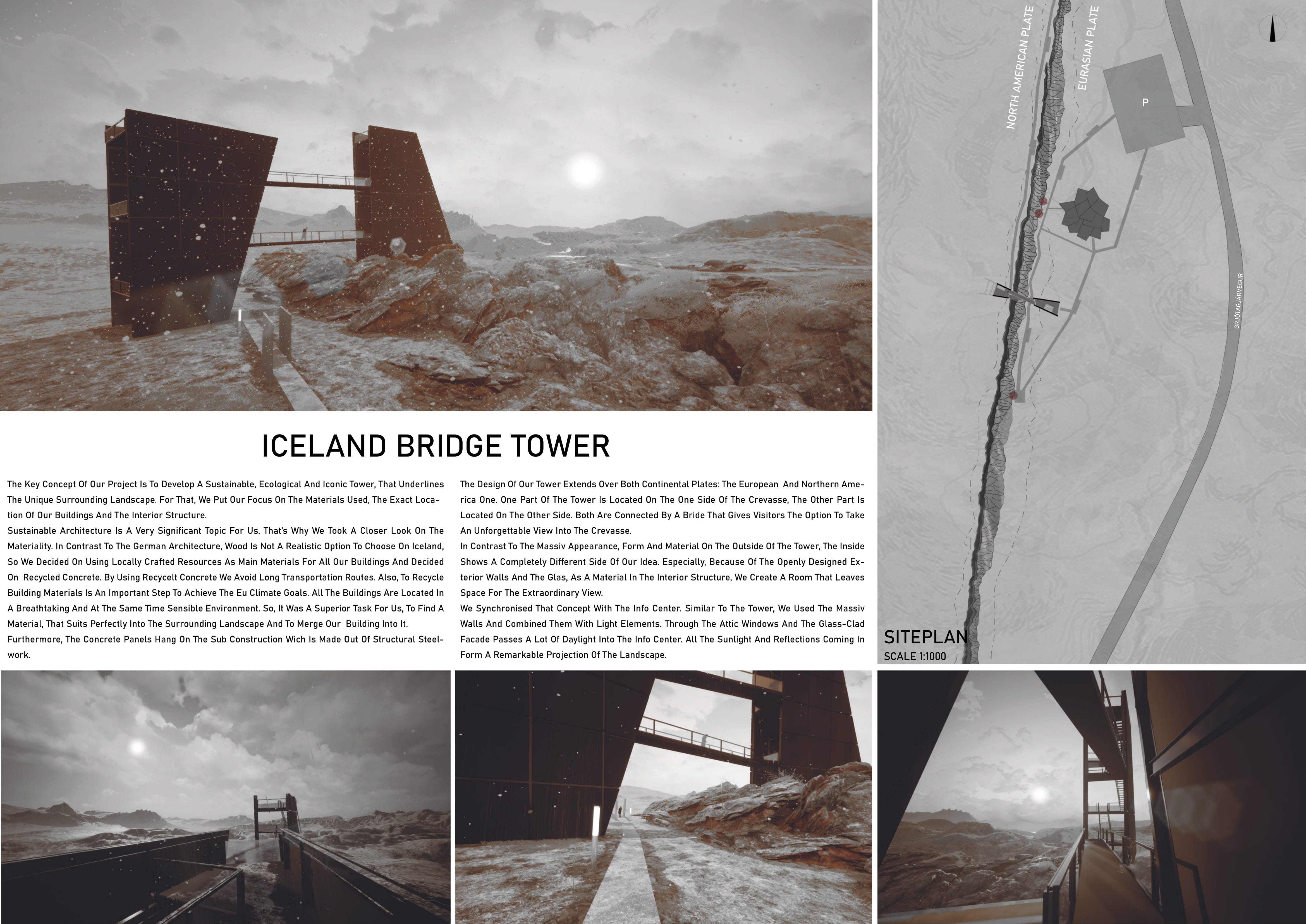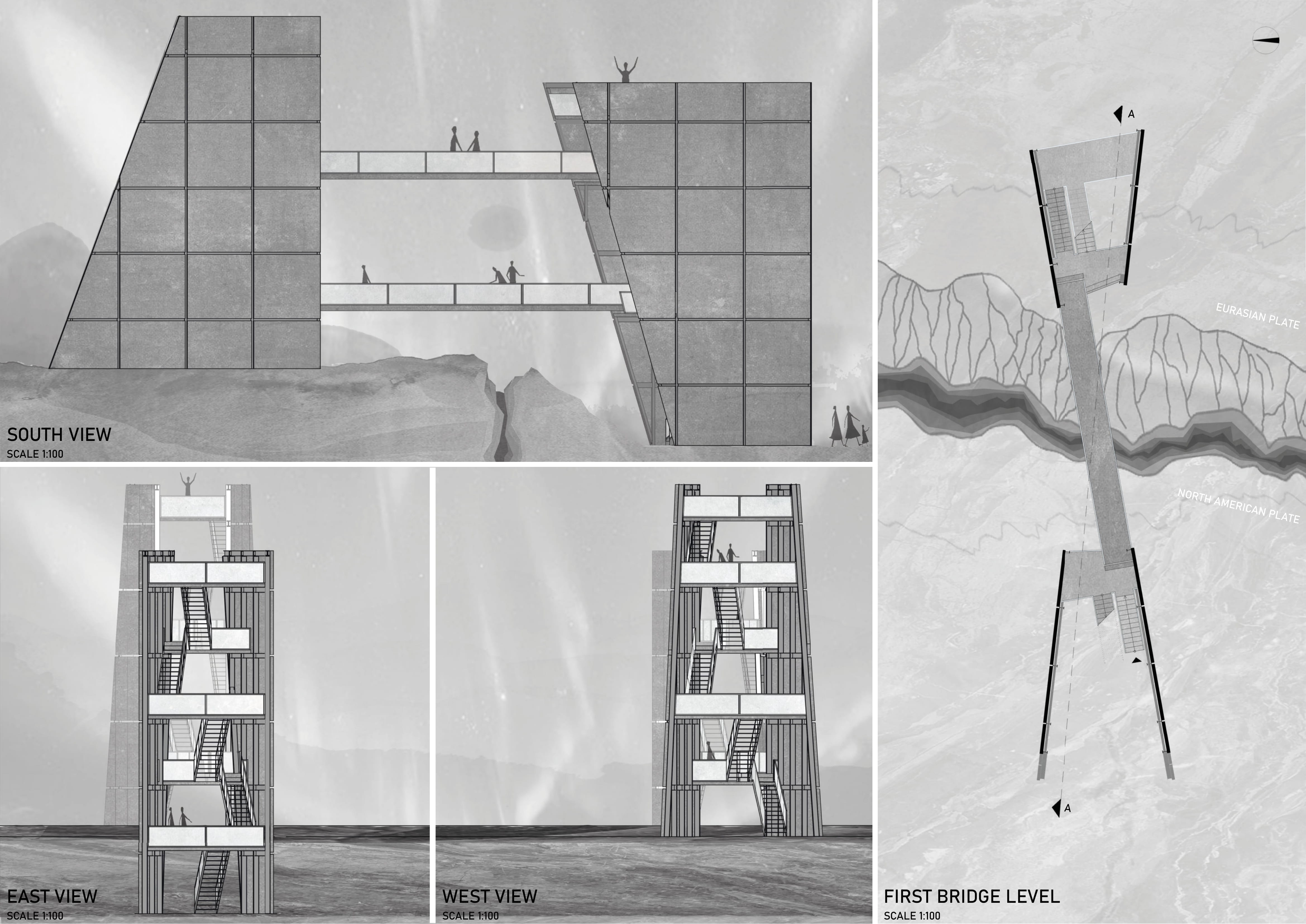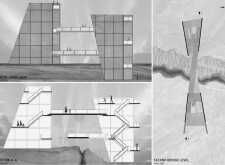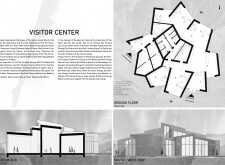5 key facts about this project
The architecture of the Bridge Tower is designed with both aesthetics and functionality in mind. The main feature of the project, the Bridge Tower, rises prominently within the landscape, establishing a familiar and distinctive identity. This structure acts as both a viewing platform and an observation point, inviting visitors to appreciate the stunning natural scenery while being informed about the geological significance of the area. The triangular forms created by the design ensure that the building complements rather than disrupts the picturesque views and rugged terrain of the Icelandic landscape.
The Visitor Center is an integral part of this architectural project, designed to facilitate education and community interaction. It serves as a hub for tourists and locals alike, providing information about the geological features and the nature of plate tectonics that shape the region. The layout of the space is intuitive and welcoming, featuring open areas where visitors can gather, exchange ideas, and participate in guided tours. Large windows and strategic openings in the design invite natural light into the interior spaces, fostering an inviting atmosphere that encourages prolonged engagement.
One of the key aspects of the architecture is the careful selection of materials employed throughout the project. The use of recycled concrete aligns with contemporary sustainable practices, minimizing environmental impact while also providing durability. Structural steel components are implemented for their strength and adaptability, allowing the design to achieve intricate forms while maintaining safety and stability. Additionally, extensive use of glass allows for unobstructed views of the surrounding landscape, creating a seamless transition between the indoors and outdoors.
The building's unique design is characterized by its asymmetrical massing, which is intentionally crafted to contrast with the fluid lines of the topography. This deliberate choice not only adds visual interest but also enhances the building's connection to its setting. Furthermore, the architectural design incorporates geothermal energy sources, aligning with Iceland’s commitment to renewable energy and the sustainable operation of public spaces. The synergy between the structure and its ecological surroundings reflects a modern architectural approach that prioritizes environmental consciousness while also meeting the needs of its users.
The architectural ideas behind the Iceland Bridge Tower and Visitor Center focus on creating a dialogue between the built environment and the natural landscape. The project represents a model of how architecture can harmoniously integrate with geographical features while fostering community engagement and educational opportunities. It stands as an example of responsible design that respects the local context while serving the diverse needs of visitors and communities.
For those interested in exploring this project in greater depth, reviewing the architectural plans, sections, and detailed designs will provide additional insights into the innovative approaches taken by the architects. Delve into the distinctive qualities that define this architectural endeavor, and discover how it successfully balances nature and design in a location known for its dramatic geophysical features.


























